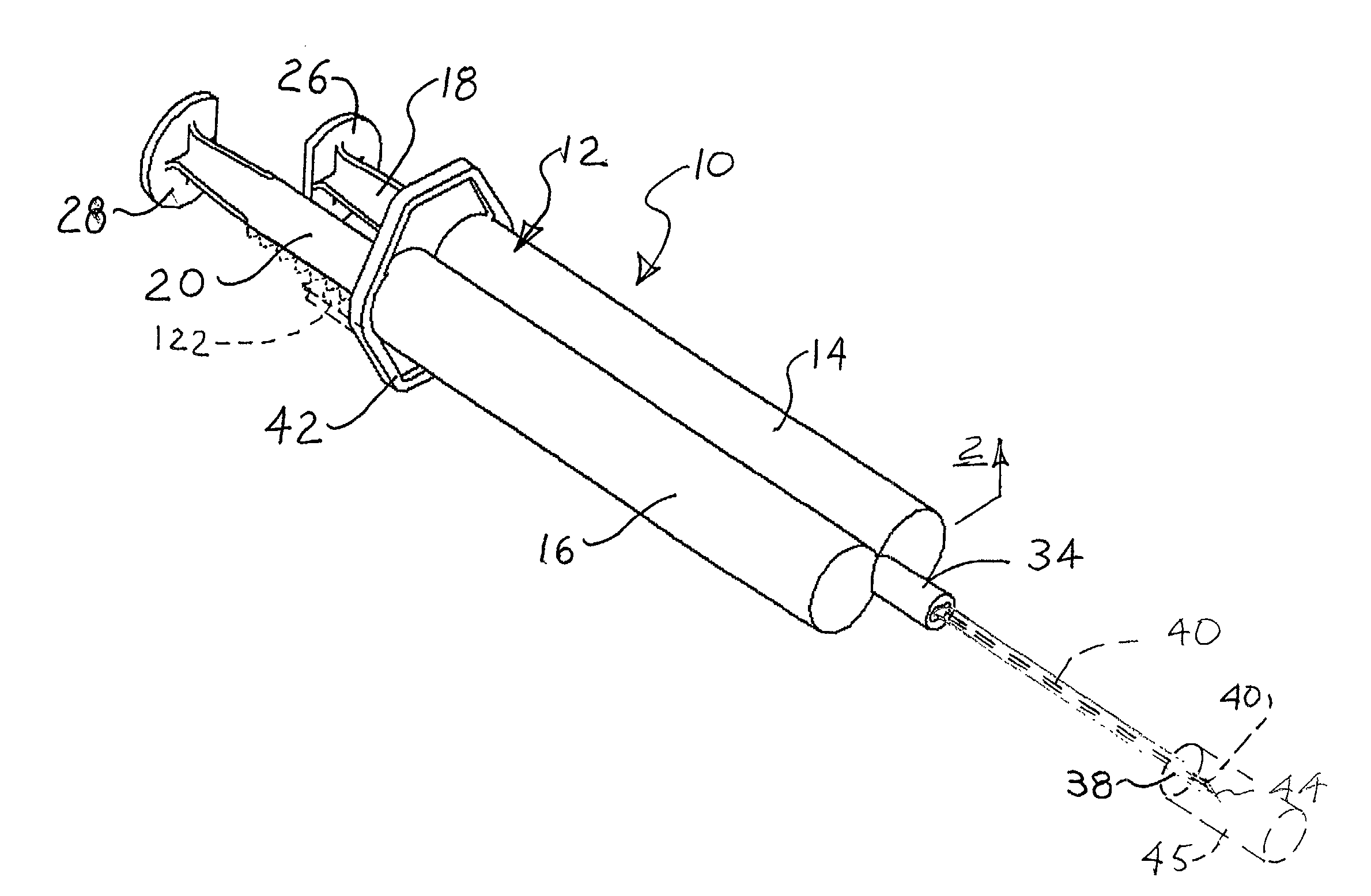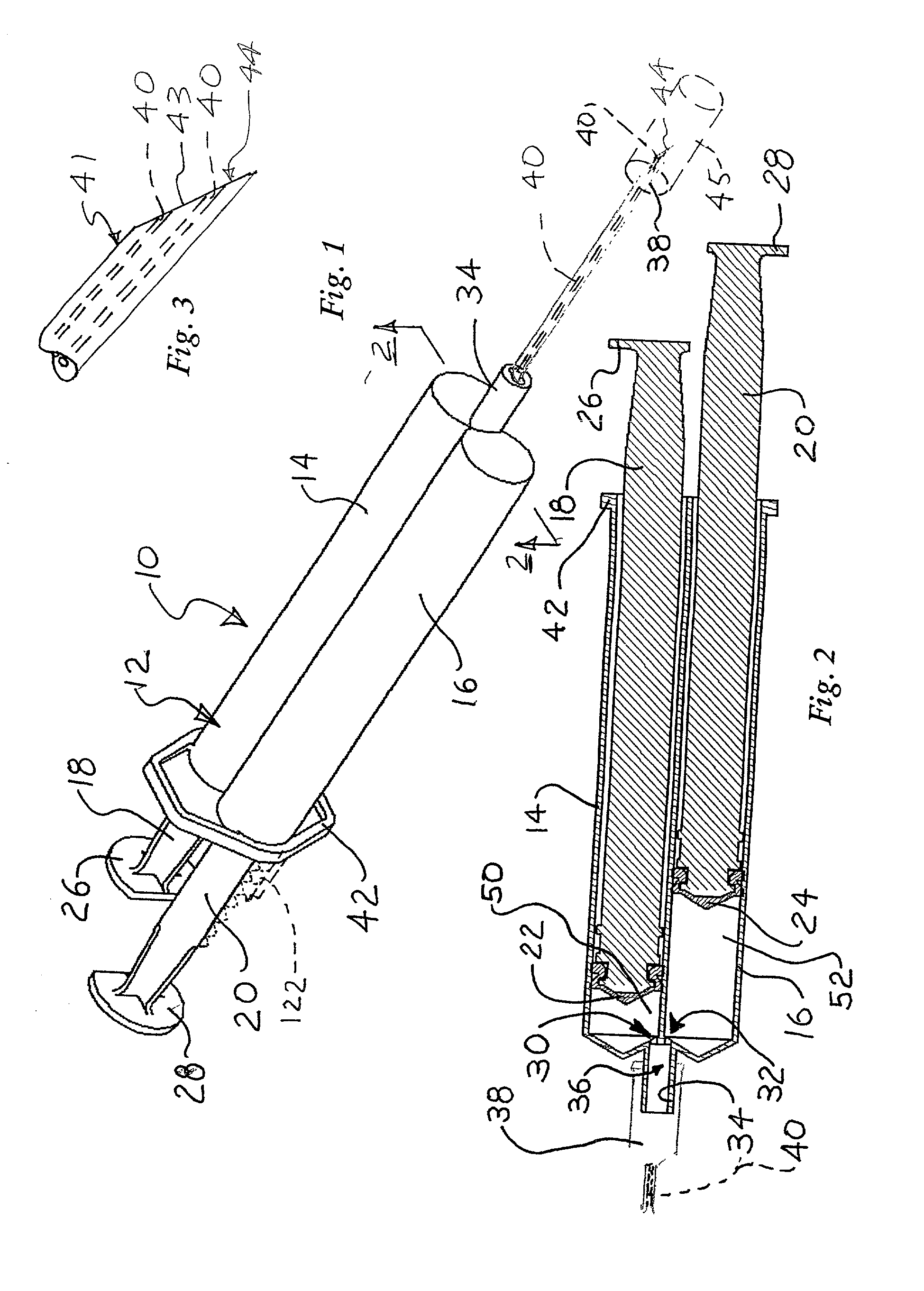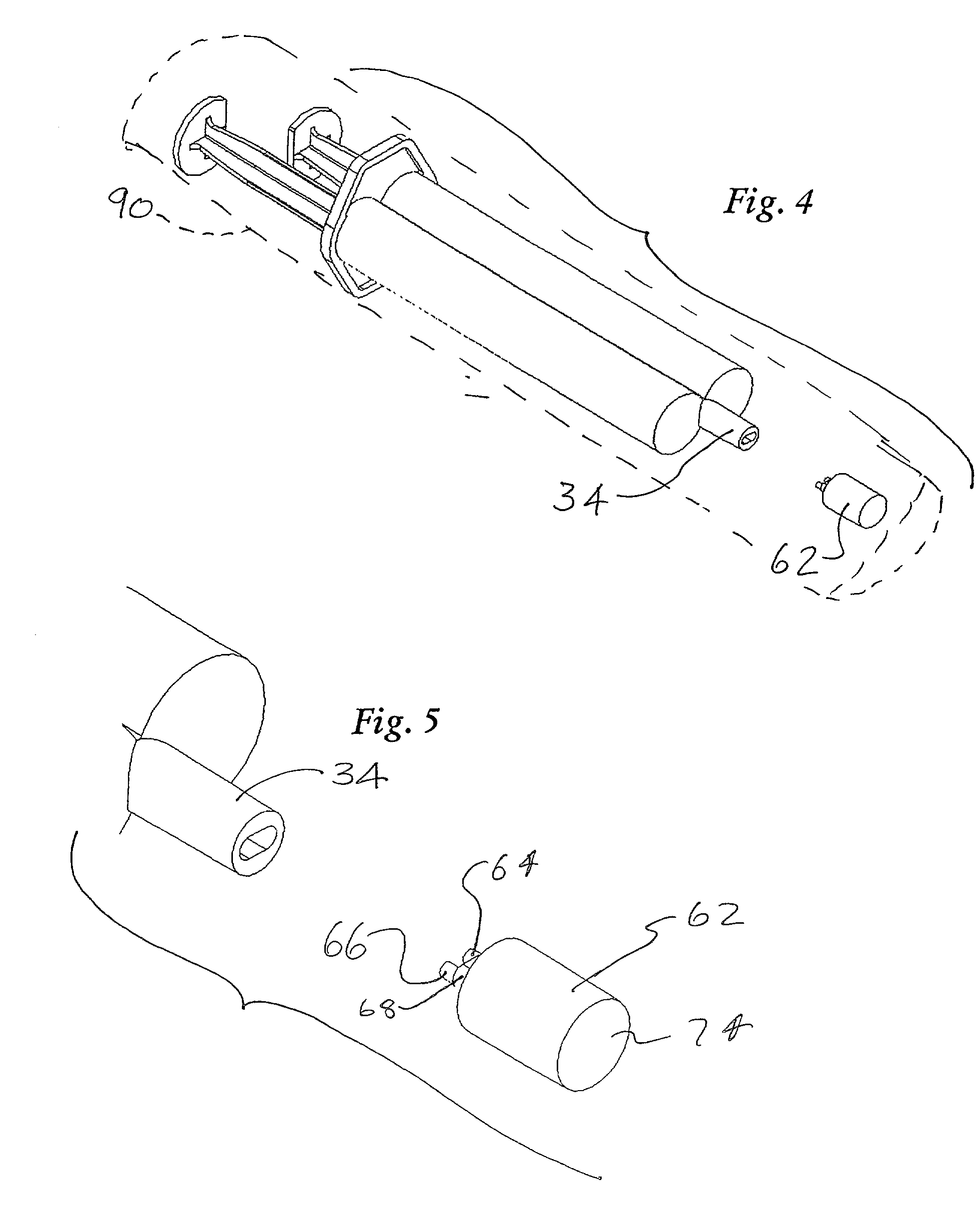Methods and devices for sclerotherapy
a sclerotherapy and catheter technology, applied in the field of sclerotherapy, can solve the problems of spider veins that are largely unnoticeable, spider veins that are perceived as having a detrimental appearance on the skin, veins of the leg to engorge, etc., and achieve the effects of generating more medical waste, consuming more syringes and needles, and more time to provid
- Summary
- Abstract
- Description
- Claims
- Application Information
AI Technical Summary
Benefits of technology
Problems solved by technology
Method used
Image
Examples
Embodiment Construction
[0024] The invention provides sclerotherapy methods having reduced risk of complications. The methods involve flushing or displacing blood from the vein or vessel, before injecting a sclerosing solution into the vessel. Injection of a clear flushing solution, such as sterile saline displaces blood from the vein. The vein can then be difficult or impossible for the physician to see. Consequently, injecting the sclerosing solution through the same needle, at the same injection site, avoids the need to find the vein, after the flushing solution is injected. Consequently, the methods are more advantageously performed using a syringe assembly which can deliver both solutions with a single injection, through a single needle. This reduces the number of injections required. In addition, it ensures that the flushing and sclerosing solutions are injected at the same location, while avoiding the difficulties of finding the vein after injection of the flushing solution.
[0025] FIGS. 1 and 2 show...
PUM
 Login to View More
Login to View More Abstract
Description
Claims
Application Information
 Login to View More
Login to View More - R&D
- Intellectual Property
- Life Sciences
- Materials
- Tech Scout
- Unparalleled Data Quality
- Higher Quality Content
- 60% Fewer Hallucinations
Browse by: Latest US Patents, China's latest patents, Technical Efficacy Thesaurus, Application Domain, Technology Topic, Popular Technical Reports.
© 2025 PatSnap. All rights reserved.Legal|Privacy policy|Modern Slavery Act Transparency Statement|Sitemap|About US| Contact US: help@patsnap.com



